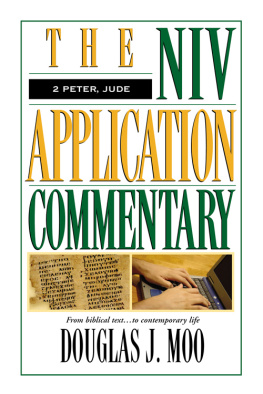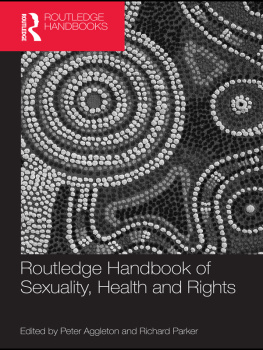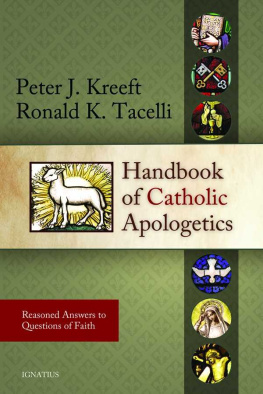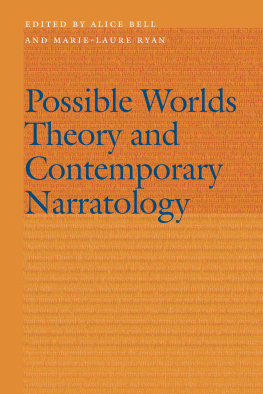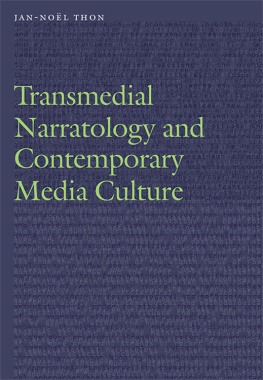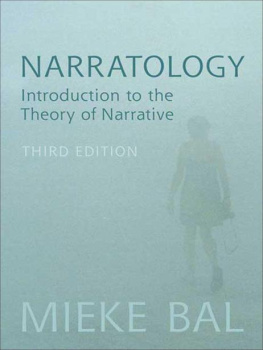Hühn Peter - Handbook of narratology. Volume 1
Here you can read online Hühn Peter - Handbook of narratology. Volume 1 full text of the book (entire story) in english for free. Download pdf and epub, get meaning, cover and reviews about this ebook. City: Berlin, year: 2014, publisher: De Gruyter, genre: Religion. Description of the work, (preface) as well as reviews are available. Best literature library LitArk.com created for fans of good reading and offers a wide selection of genres:
Romance novel
Science fiction
Adventure
Detective
Science
History
Home and family
Prose
Art
Politics
Computer
Non-fiction
Religion
Business
Children
Humor
Choose a favorite category and find really read worthwhile books. Enjoy immersion in the world of imagination, feel the emotions of the characters or learn something new for yourself, make an fascinating discovery.
- Book:Handbook of narratology. Volume 1
- Author:
- Publisher:De Gruyter
- Genre:
- Year:2014
- City:Berlin
- Rating:4 / 5
- Favourites:Add to favourites
- Your mark:
- 80
- 1
- 2
- 3
- 4
- 5
Handbook of narratology. Volume 1: summary, description and annotation
We offer to read an annotation, description, summary or preface (depends on what the author of the book "Handbook of narratology. Volume 1" wrote himself). If you haven't found the necessary information about the book — write in the comments, we will try to find it.
Handbook of narratology. Volume 1 — read online for free the complete book (whole text) full work
Below is the text of the book, divided by pages. System saving the place of the last page read, allows you to conveniently read the book "Handbook of narratology. Volume 1" online for free, without having to search again every time where you left off. Put a bookmark, and you can go to the page where you finished reading at any time.
Font size:
Interval:
Bookmark:
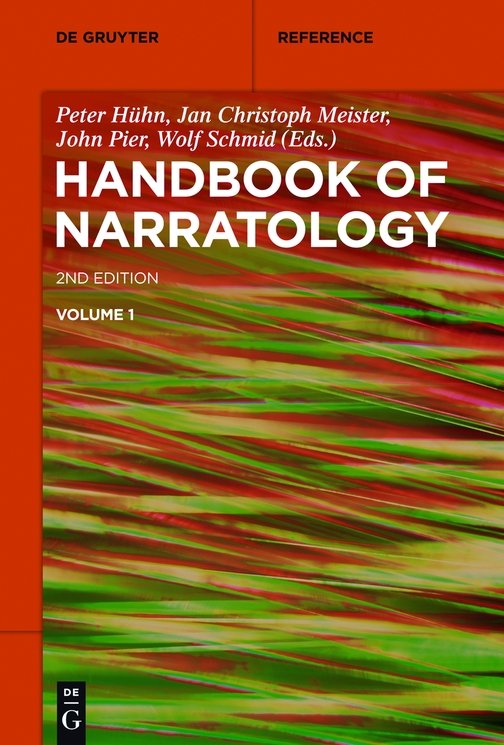
Over the last few decades, the field of narrative studies has been vastly expanded by a wide spectrum of innovations in the philologies and other disciplines including linguistics, history, theology, art history, psychology, media studies, medicine, law, education and more, and it has also seen a growing number of attempts to survey, order, and summarize the results of such studies in collections of essays, encyclopedias, companions, dictionaries, etc.
Against this background, the present Handbook of Narratology , now published in a considerably expanded second edition, offers a new type of systematic and comprehensive in-depth overview of recent and older research, taking account of the role played by the various disciplinary and national traditions in narrative studies. The 67 entries present international research devoted to the key terms, categories, and concepts of narratology in the form of full-length original articles structured in a parallel manner: each entry starts with a concise definition (1) followed by a more detailed explication of the term in question (2) and then proceeds, in its main part, to provide a differentiated description and critical discussion of the various approaches, positions, and controversies in their historical development (3), concluding with topics for further research (4) and a select bibliography (5). Where relevant, all entries are cross-referenced. They vary in length in accordance with the complexity of the respective concepts.
The entries devoted to the central categories and dimensions of narratology testify to the advanced state of narratological theory and to a high level of terminological and analytical precision. Such is not yet the case of topics dealt with in entries applying narratological concepts to disciplines and fields of study beyond literature. The authors of these articles thus seek to stake out the current state of nascent narrative research in these fields in a heuristic and explorative way, pointing to relevant features and issues rather than attempting to resolve basic questions. Nevertheless, these entries are of a particular interest and value, for they demonstrate the pervasiveness of narration in human culture and point to the fruitfulness of narratology for the description and analysis of narration in its prolific forms.
The Handbook of Narratology was first published by Walter de Gruyter in 2009 and was subsequently made available as an open-access Living Handbook of Narratology on the Internet. The original 32 articles of the first edition have been updated and 35 new articles have been added, first in the online version and now in the second print edition.
This handbook grew out of the work of the Narratology Research Group at Hamburg University (20012007) and the Interdisciplinary Center for Narratology (founded in 2007).
We wish to thank Wilhelm Schernus for his expert subediting of the individual articles.
Hamburg and Paris
July 2014
Peter Hhn
Jan Christoph Meister
John Pier
Wolf Schmid
Jrg Schnert
The author (real or empirical) can be defined in a narrow sense as the intellectual creator of a text written for communicative purposes. In written texts in particular, the real author is distinguished from the mediating instances internal to the text (cf. 2.1; Schmid Implied Author, Schmid Implied Reader; further Alber & Fludernik Mediacy and Narrative Mediation). Beyond linguistically created works, the term author is also used for works in other media such as music and the visual arts as well as for comics, photography, film, radio and television programs, and computer games.
A broader understanding of the term author is used in the following contexts, among others: as conveyor of action in a socio-cultural context (cf. 2.3); in the sense of specific cultural-historically relevant conceptions of authorship; as a unifying instance in the interrelation of works ( uvre ); as a reference for classification in terms of epoch and canon; and as an important point of reference for the meanings ascribed to works through which the recipient can determine the authors intention and/or author-related contexts relevant to understanding a work (cf. 2.2).
During the 20th century, a broad spectrum of how the author is understood was developed in scholarly circles: for framing concrete contexts (e.g. producer of cultural goods); for abstract author functions (e.g. causa efficiens ); for concepts of the author relevant for understanding such as the implied author (Schmid Implied Author). Unlike the dominant tendencies in the intensive discussions conducted since 1990 on the status and understanding of the author, this analysis will focus on the authors narratological relevance.
As in other domains, it holds for narratological analysis that the real author is held responsible for the communicative intention and form of a narratively organized work (on the roles of the author in literary communication, see Okopie-Sawiska [1971] 1975; Fieguth 1975). In the case of narrative fictions, it has proved useful to assume that mediacy is transferred to text-internal instances (voice) including the narrator (Margolin Narrator) to various degrees of explicitness and, possibly, characters (Jannidis Character) in the storyworld. To these there correspond addressee instances such as the narratee (Schmid Narratee; further Prince Reader) or figured addressees, respectively. The arrangements of autofiction (within literary autobiography, e.g.) constitute a special case.
Authorship is to be seen as a status attributed to a work with culturally differing author constructs bound up with authorial self-reflection and self-presentation in a spectrum ranging from self-assurance to skepticism as to the validity and scope of claims to authorship. In the sphere of (fictional) literature, constructs such as the author as vates , poeta doctus , creative genius or writer can be found. Independent of such typologizing expressions, particular author constructs also hold good for the reception of works in specific periods (e.g. the image of Milton during the Romantic period). These types of construction can refer to the totality of an authors work (cf. uvre author or career authorBooth 1977: 11) or to representative individual works.
Since the 18th century, there has been a culturally significant need to fall back on the author for interpretative processes and value judgments of an artistic work based on the creative act, authenticity, individuality, originality, unity of the work and its depth of meaning. From this perspective, the definition of authoralism in Benedettis sense ([1999] 2995: 812) is based on the experience that in the modern era it is impossible for a work of art to exist except as a product of an author (10)as being authored (7478). A culturally (and legally) important result of this is that the authenticity of a work is attested with reference to the real author as its originator, which is significant, for instance, in the editing of texts (cf. Bohnenkamp 2002).
Font size:
Interval:
Bookmark:
Similar books «Handbook of narratology. Volume 1»
Look at similar books to Handbook of narratology. Volume 1. We have selected literature similar in name and meaning in the hope of providing readers with more options to find new, interesting, not yet read works.
Discussion, reviews of the book Handbook of narratology. Volume 1 and just readers' own opinions. Leave your comments, write what you think about the work, its meaning or the main characters. Specify what exactly you liked and what you didn't like, and why you think so.





